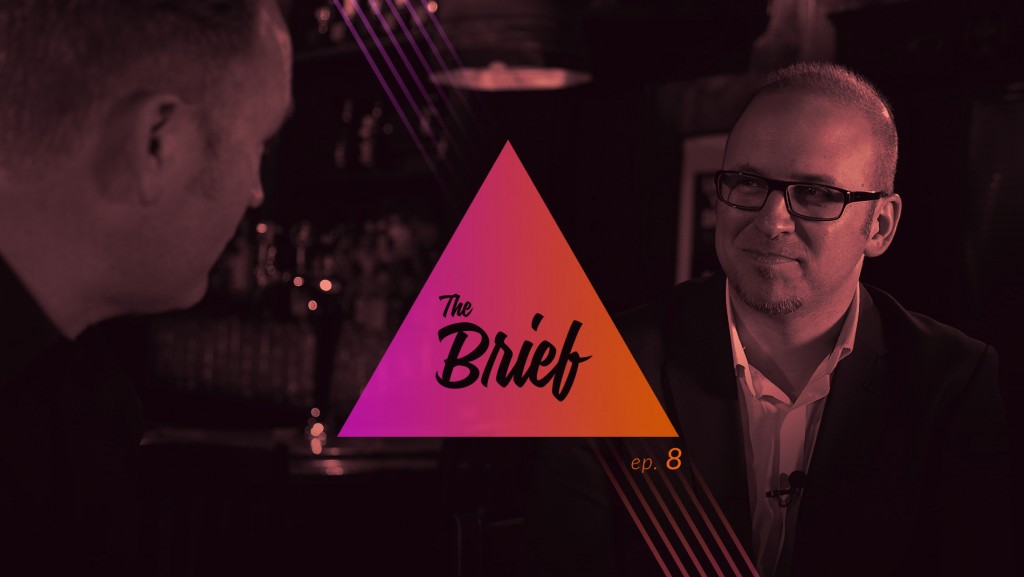In this episode of The Brief, we feature an enlightening chat with Corey Timpson of the Canadian Museum for Human Rights (CMHR). At the museum, Corey is responsible for Exhibitions, Research and Design – a broad mandate that relies heavily on the use of technology to facilitate interactive and dialogic experiences between and among visitors.
About the Canadian Museum for Human Rights
The CMHR is located in Winnipeg, Manitoba and was established in 2008 to be “a national and international destination – a centre of learning where Canadians and people from around the world can engage in discussion and commit to taking action against hate and oppression.” (via www.humanrights.ca)
With 60+ digital installations, a feature-rich mobile app, and a massive collection of digital assets, the CMHR is a leader among cultural institutions using technology to deliver a meaningful experience to visitors, both in-person and online. The museum’s website promises “a journey of education and inspiration unlike anything you’ve experienced before.”
“The museum has an intangible subject matter – human rights – so we do a lot of storytelling.” – Corey Timpson
The term “human rights” is relatively new, emerging in popular culture following World War II. With limited artifacts to showcase, institutions like the CMHR have a unique challenge: how to tell stories. Turning to technology for storytelling was a no-brainer. As Corey puts it, “We do have artifacts, but we use the artifacts to help tell the story we want to tell vs. telling a story about the artifacts.”
Adapting With Technology
Many museums initially resisted technology, fearing that digitizing and sharing their assets online would detract from the draw of the physical artifacts and institutions, ultimately making them irrelevant. In fact, the opposite has often proven true, with technology serving to promote and build interest in “the real thing”.
Today, museums are increasingly using technology as a tool for everything from documenting and managing artifacts and content to improving accessibility to their collections. For example, the CMHR offers a mobile app that “reads” signage at over 120 Universal Access Points throughout the galleries for the visually impaired and others who can’t read for themselves. The app can also be viewed in ASL or LSQ for visitors who are deaf or hard of hearing.
Indeed, mobile devices are ubiquitous today, and museums have taken advantage of this. The CMHR’s app incorporates an interactive “mood meter” for visitors to easily share on social media how they’re feeling as they tour the museum.
Museums: Evolve or Die
Technology is playing an important role in the evolution of museums as they strive to build successful relationships with their audiences. In the past, museums simply “informed” visitors; now, with the help of technology, there can be dialogue. Technology allows for varying levels of participation, personalization, and even, in some instances, content creation and shared ownership – all of which can lead to a visitor who is infinitely more engaged in the museum experience.
In using technology for storytelling, Timpson notes the importance of finding a balance between active, passive, immersive, and interactive experiences to keep visitors engaged without exhausting them.
“I think what we can be really proud about was the moderation in which we employed technology in order to create a well rounded, balance experience for the visitor.”
– Corey Timpson
What’s Next for Museums and Digital Media?
Looking ahead, Timpson emphasizes the importance of focusing on the story and why it’s being told, before worrying about the “how” – which is where technology comes in. Taking advantage of a wider variety of distribution channels is one opportunity Timpson sees for extending the reach of museum programming. As Canada’s first national museum to be built outside the National Capital Region, the CMHR is using digital media to improve accessibility to its content both nationally and internationally. Choosing the right tools for telling the story will ultimately drive the evolution of digital media and technology in museums, where the ultimate goal is delivering a meaningful experience to the audience.
Resources:
- www.humanrights.ca
- https://humanrights.ca/visit/tours/mobile-app
- http://sttpcanada.ctf-fce.ca/
- http://www.theguardian.com/culture-professionals-network/2015/oct/23/digital-technology-museums-audiences-collaboration
- https://www.oculus.com/en-us/blog/welcome-to-the-virtual-age/

